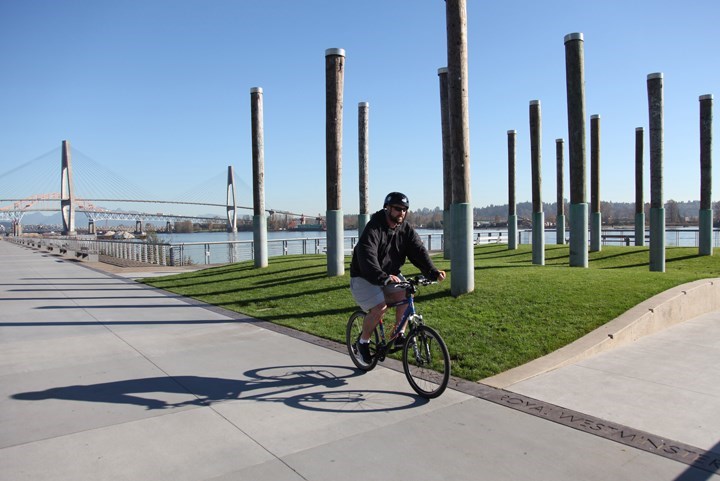Queen’s Park has been added to the local parks where folks will be able to drink liquor in the coming weeks.
Last month, council approved a pilot project to allow adults to drink alcohol in designated areas of Port Royal Park, Grimston Park, Moody Park, Hume Park, Sapperton Park and Westminster Pier Park. Once the bylaw is approved, people will legally be able to consume liquor in specific areas of these parks from 11 a.m. to dusk, seven days a week.
At the May 3 meeting, a staff report included a series of maps showing the zones in these parks where liquor could lawfully be consumed.
“As I was looking at the maps prepared by staff, I can’t reconcile not having Queen’s Park included,” said Coun. Nadine Nakagawa. “It is the largest park in city. It is also adjacent to the downtown area, which is an area where people live in apartments and condos and don’t have access often to their own back yards or their own private outdoor spaces. I recognize that there is Pier Park but I think it makes more sense to me to be more consistent in the bylaw.”
Council supported a motion to add Queen’s Park to the list of parks where alcoholic beverages will be allowed.
Coun. Mary Trentadue supports adding Queen’s Park to the parks where liquor can be consumed, but is reserving judgment on the initiative.
“I am kind of lukewarm on this entire motion. I understand why we might want to have this occur, but I also want to understand who will benefit from it and who will not, and will be harmed potentially by it,” she said. “I think this is a good thing to try for the summer. I think people will still be needing to be outside and be, hopefully, meeting with friends and family, and it seems like it is a reasonable program to test out.”
Dean Gibson, the city’s director of parks and recreation, suggested two areas in Queen’s Park that are suitable for the pilot program – an area near the picnic shelter, where most of the picnicking activities in the park take place, and a lawn area near the park’s entrance at First Street and Third Avenue, which has become a spot where a lot of people have been socializing during the pandemic.
Coun. Patrick Johnstone, who brought forward the initial motion, thanked staff for making “appropriate adjustments” to the areas he had proposed, based on staff’s knowledge of the parks.
Gibson said staff plans to bring forward the bylaw for three readings at council’s May 10 meeting and for adoption on May 17, at which point the bylaw would take effect. He anticipates signage and information would be posted in the parks within days, so the pilot program should be fully operational by the May long weekend.
A report to council states that staff considered a variety of factors when selecting areas where liquor can be consumed in parks. This includes: balancing public access to both designated consumption and non-consumption zones; managing the placement near sport fields; and providing separation between designated consumption zones and areas where children and youth congregate. Staff also considered other practical considerations such as availability of seating spaces and proximity to a washroom.
Coun. Chuck Puchmayr reiterated his opposition to the initiative, citing concerns by the World Health Organization about the “drastic alarming increase” in alcohol- related fatalities all over the world.
“I know we like to look at ourselves as being modern, and look at other countries that have had fairly liberal alcohol laws. A lot of the countries that have had long-term relaxed alcohol laws also have some of the highest instances of alcohol-consumption abuse and fatalities,” he said. “What the World Health Organization talks about, they talk about safe spaces for children and for young people. And to me, a park is a safe space. If somebody absolutely needs to bring alcohol with them when they go to a park, they are actually infringing on that safe space where we might want to be with our grandchildren or our children.”
If needed, staff will tweak the areas where alcohol is permitted in local parks.
“The proposed designated liquor consumption zones attempt to strike a balance between the objectives related to providing safe and open spaces for picnics and family gatherings and the operational and management considerations for public spaces,” said a report. “Pending subsequent review of the program later this year, staff will be in position to recommend any potential adjustments to the zones within each designated park.”
Follow Theresa McManus on Twitter @TheresaMcManus
Email tmcmanus@newwestrecord.ca



